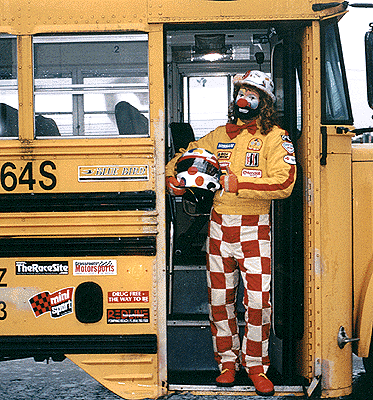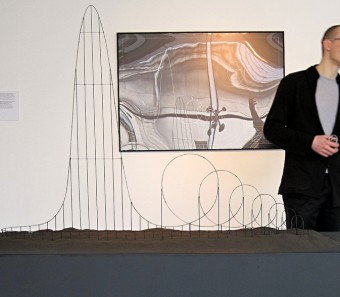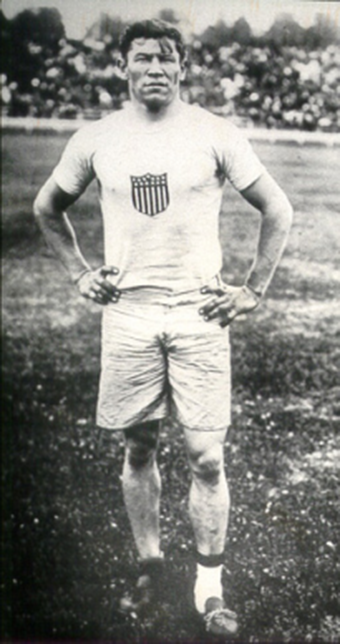

Source: Yahoo News - Health
Most U.S. health authorities recommend people who've suffered a concussion give their brain a break while they recover, but there hadn't been strong data to support that. Disagreements over whether resting the brain really aids recovery have "generated controversy," Dr. William P. Meehan III, director of the Micheli Center for Sports Injury Prevention in Waltham, Massachusetts, said. But new evidence suggests that
Lounge in large wooden vats that once contained gallons upon gallons of beer, gazing up at the original stone arches in subterranean vaulted chambers. The Hürlimann Brewery in Zurich, built in 1836, has been transformed into a hotel and thermal spa with naturally heated water from a nearby spring.


Guests don’t actually bathe in beer here (there are other places to do that) but they get to enjoy the next best thing in spacious hot tubs made from the reclaimed barrels. The clean lines of wood and steel in the new construction contrast with, yet complement the aged stone architecture of the original facility.



Enclosed tiled rooms offer large pools in which to lay on your back and float, and the places to soak extend all the way up to the hotel’s rooftop, with heated pools looking out onto the city of Zurich.







 If contemporary accounts are to be believed, the Countess Elizabeth Bathory is one of the most prolific serial killers of all time. She makes Ted Bundy look like a chump, and Jeffrey Dahmer a mere dabbler in torture and perversion. In a word, this lady was a real whack-job, and on this day in history, 1610, her horrific crimes were discovered.
If contemporary accounts are to be believed, the Countess Elizabeth Bathory is one of the most prolific serial killers of all time. She makes Ted Bundy look like a chump, and Jeffrey Dahmer a mere dabbler in torture and perversion. In a word, this lady was a real whack-job, and on this day in history, 1610, her horrific crimes were discovered.
Bathory was born in 1560 to an aristocratic Transylvanian family that spawned kings, cardinals, judges and knights. Thanks to copious inbreeding, her family tree also had its share of nuts, including sadists, lechers, and psychotics.
At the age of 15, Elizabeth was married off to Count Ferencz Nadasdy, also known as “The Black Knight,” who seems a fitting spouse for a gal who would come to be known as “The Blood Countess.”
Stuck out in the sticks while the hubby was away fighting the Turks, young Elizabeth needed to find ways to keep herself amused. She chose to gather around her those claiming to be witches, sorcerers, alchemists and other practitioners of the black arts. Together, they engaged in unspeakable acts of cruelty against the local peasant population to while away the hours.
When the Black Knight died in 1604, flagellation, torture with red hot pokers, and leaving honey-covered peasants tied to trees to be eaten by wild animals had grown passe to his widow.
Around this time, Elizabeth was in her early 40’s and very aware of the passing of her youth. This realization was bad news for the local peasantry, because a couple nights a week she *supposedly began bathing in the blood of young girls in the hopes of regaining her lost beauty.
After five years of hanging peasant girls upside-down in chains by their ankles and slitting their throats, among unspeakable acts of torture, Elizabeth decided, for whatever reason, that she needed to obtain a better class of blood. She figured the best way to go about this was to offer etiquette classes to daughters of noble families.
Bad idea Lizzie. Nobody gives a hoot about dead peasant girls, but when you start bumping off the aristocracy, the authorities are going to come sniffing around, especially if you get lazy and start throwing corpses over the castle walls.
Now that people who actually mattered had been harmed, and after finally heading complaints by the local populace, King Matthias of Hungary ordered a raid of Elizabeth Bathory’s castle on December 26, 1610. The raid turned up numerous girls dead, dying, or awaiting torture. The Countess’s accomplices were put on trial and burned as witches, but as a noble, Elizabeth could not be tried or executed. Instead, she was walled up in a room of her castle, with a slit large enough to pass food through. She died four years into her imprisonment.
So how many did she kill? Estimates go as high as 650 young women, though that may be an exaggeration.
*In fairness, it is worth mentioning that the tales of Elizabeth Bathory’s blood-soaked escapades could be propaganda spread by the Catholic Hapsburgs, another powerful family. The Bathorys were Protestant rulers in a region that was predominately Catholic, and documented instances of the “bathing in human blood” story didn’t surface until Elizabeth had been dead for over a century. Some of the accusations against her were also supposedly made under torture worthy of the Inquisition.
That said, some of the earliest accusations against her were made by a Lutheran minister, not the Catholic church. That’s not to mention all the dead bodies and body parts, as well as over 300 witnesses and survivors who could corroborate at least 80 of the deaths. Castle gaurds estimated there were another 100-200, based on bodies they’d seen carried out.
There was also a fair amount of first-hand accounts of extremely brutal torture at the hands of the Countess by some of the survivors found during the castle raid. The evidence against her was so damning that King Matthias (aptly named “Matthias the Just”, something of a philosopher King) requested that she be executed, despite the bad precedent that would set for the aristocracy. Nevertheless, this didn’t sit too well with the other nobles, so she escaped such a punishment as noted.
So while some of the stories since then may have become a bit fanciful, such as the whole bathing in blood thing, despite the revisionist “Catholic church” conspiracy theories that may or may not be correct on some of the points, Elizabeth was definitely no Saint.
If you liked this article, you might also enjoy:
Bonus Fact:
Expand for References
The post This Day in History: December 26th appeared first on Today I Found Out.
Source: Google News - Health
Children who were breastfed for more than six months scored the highest on cognitive, language and motor development tests as toddlers, in a new study from Greece. Earlier research tied breastfeeding to better thinking andSource: The Guardian
In Sweden's largest toy store, play kitchens stand opposite train sets; baby strollers are piled beside a stack of toy guns; My Little Pony stares at swords and ninja costumes; princess dresses brush up against firefighter outfits. Even the Barbie house – that last redoubt of the candy-pink – is under pressure from a Lego display. "Children are not coded to blue for boys and pink for girls – they should be free to choose what they want to...
While there is a lot of overlap when it comes to conifers and evergreens, they are not interchangeable terms. Evergreens are generally just that, ever green. Unlike deciduous trees that drop their leaves when they go dormant in the fall, evergreens keep their leaves year-round. This includes evergreens with needle leaves, like pines and spruces, as well as broadleaf evergreens, such as rhododendrons and hollies. I said they are generally ever green because some plants that remain green in mild climates will drop their leaves in areas with severe winters, for example, several viburnums.
...Source: Medical News Today
A new book by Murray Straus, founder and co-director of the Family Research Lab and professor emeritus of sociology at the University of New Hampshire, brings together more than four decades of research that makes the definitive case against spanking, including how it slows cognitive development and increases antisocial and criminal behavior."The Primordial Violence" (Routledge, 2013) shows that the reasons parents hit those they love includes a...
 Maker’s Mark tells BourbonBlog.com that thousands of holiday lights and extended hours will greet bourbon fans during free tours at Maker’s Mark at the Candlelight Tours between 5:30 and 7:30 p.m., tonight on Saturday Dec. 14, 2013.
Maker’s Mark tells BourbonBlog.com that thousands of holiday lights and extended hours will greet bourbon fans during free tours at Maker’s Mark at the Candlelight Tours between 5:30 and 7:30 p.m., tonight on Saturday Dec. 14, 2013.
Visitors can tour the festively decorated Victorian grounds and 19th-century restored distillery.
The self-guided Candlelight Tours are free and open to the public.
Even if you don’t make the Candelight Tours, the Maker’s Mark Distillery will be decorated throughout the holidays for you to enjoy.
To learn more about Bourbon events throughout the year, subscribe to our free Bourbon newsletter on this link.
Visitors (21 years of age and over) can enjoy bourbon-inspired cocktails and refreshments on both scheduled nights. Parking is free, as well.
Maker’s Mark Distillery is located at 350 Burkes Spring Rd, Loretto, KY 40037.

Like this article? Here are some other articles of interest:
“A myth is the dream of a culture.”
—Joseph Campbell“We’re all bozos on the bus, so we might as well sit back and enjoy the ride.”
—Wavy Gravy
Having passed through the abundant harvest of my juicy, fruitful celebration of 40, I’m now freezing at the threshold of the dark winter of Coming To Terms With Aging.
 |
I never expected this.
I always thought I’d sail through this part, barely stepping on the universe’s Life Change Lintel as I breezed through the portal into midlife.
In my vision of my 40s, I’d be one of those women who murmurs through still-full lips that Why no, she hasn’t noticed any changes to her body, thanks to perfect nutrition and regular exercise and by the way yoga and Swiss chard juice is quite magical!
I’d keep patiently adding, say, 10-20 lb to my lifts per year. You know, reasonable expectations. Modest. Do-able. By the time I was 90, I’d be deadlifting 1500 lb. Of course.
I’d say shit like Age is just a number! I have the body of a 20-year-old! (Well, not my 20-year-old body, which was saturated in alcohol, 50 lb overweight, and usually parked in front of a daytime talk show.)
Somewhere along the way, the memo to my body about How This All Works must have gotten confused.
Instead of adding 20 lb to my deadlift, I added it to my ass. OK, no problem. Bodyweight coefficient. Moar muscle. Right?
Ha.
Another memo typo. I seem to have subtracted 20 lb — and more — from my lifts.
Although thanks to smart training, I’ve stayed wonderfully injury-free for many years, I do still sometimes make inadvertent unggghh sounds when I warm up for morning workouts.
Squaaauunnnghhh crunch. Wait, what? Is that my fucking knee? When the fuck did that shit start creaking? Or is that more of a clicking?
In my darkest, most hormonally-addled, helpless and hopeless moments, I rage and cry. I curse my body. It’s cheated. It’s lied. It’s let me down. It’s not following the rules.
Here is a short list of things I mourn.
Loss of control (as if any of us actually had, or will have, control, ever).
A mountain of too-small clothing. Wait… are you shitting me… my shoes are getting smaller too? [gazing at flappy flipper feet]
My smugness (and occasional self-righteous whining) about how I’m different. Look at me! Magical, special snowflake! Nobody understands me! My body doesn’t follow the rules!
My expectations about, like, everything.
The comforting fiction that a healthy diet, regular exercise, and being a diligent Good Girl about health will fix and prevent every single thing that could ever happen to me. If I can just find the “perfect” workout and nutrition plan then I will never die. (Corollary: If I get a zit, tendonitis, cancer, or hangnail it means I must root out the failure of my health habits and purge the inflammatory inefficiency with extreme prejudice!)
Notice the “if-then” equation.
If I do all the right things then I should get everything I want.
My mom, an active woman in her late 60s who’s already kicked cancer and other chronic diseases in the fucking face with a tiny foot, complained to me the other day about a bit of arthritis in her thumb.
“I don’t get it,” she said. “I’ve been eating Paleo. That helps inflammation, right? Should I supplement with something?”
“Ma. Paleo’s just a good diet. It’s not gonna make you immortal.”
I could hear my mother pouting down the phone. Like me, the revised equation seemed deeply unfair to her:
If I do all the right things then I may or may not get anything at all. Fuck you, hapless bozo on the bus, sez the universe.
 |
So then you might — quite rightfully — ask: What’s the goddamned point? Why bother?
Great question.
One cold, dark morning, deep in a hormone-deficiency valley, as I creaked and crunched in my basement gym, feeling my gym shorts slice into my emergent muffin top, I had a single rebellious thought:
I’m still here, fuckers.
I’m still here.
It’s dark and frigid. This floor has spiders. My bum hurts. There’s an icy draft.
I’m still here.
Showing up.
My hips are locked up like Fort Knox. An ovary gremlin stole my estrogen.
I hate feeling weak. I hate that light switch. I hate reality. I hate your face. I hate this song on my iPod. I hate this barbell and the ridiculous, embarrassing baby weights hanging on it. I hate stupid jerkhead everything.
I’m still here.
Breathe. Move. Rep. Creak.
Still here.
Because this is it. It doesn’t get better than this. This is how it works. It’s all the road. It’s all part of the journey.
You don’t get to drive the bozo-bus.
If you’re lucky, you get to look out the window as your life-vehicle hurtles towards the unknown, with a drunken maniac at the wheel.
 Hello! I’ll be your chauffeur for the next forever! Buckle up… ahhh don’t bother, you’re gonna hit the windshield at some point. |
Sure, if you do yoga and drink Swiss chard juice and rep out some squats (or whatever variation on eating healthy and staying active you prefer), your chances are definitely better than if you, like my 20-year-old self, watch Sally Jessy Raphael re-runs while sitting on your bursitis-y, ever-expanding, unmoving hips, swilling chicken wings and beer all day.
Because what’s the alternative? There is none.
Either you take care of business and give yourself the best chance of survival (while accepting the inherent fuckedupitude and randomness of life), or you relinquish all hope entirely.
Good health habits and regular movement definitely help your bozo-bus driver be a little less wasted and crazy.
Most of the time.
Sometimes you look in the mirror and think Ha! No wrinkles! I feel great today! Thanks, kale! and kale throws you a fist bump and you rock out together and then you throw on a slimming black knit shift that restrains your resplendent glutes like a bowling-ball-bag and go out to ass-kick the world.
And sometimes you wake up — naturally — at 4 am (4 am? When did that start to seem fucking normal?) and stagger down to your basement and attempt to move some metal around while cursing.
It’s all part of the process. All of it. ‘Tis the season.
And I ain’t goin’ out like a sucka.
 That’s right, fuckers. Kicking and screaming all the goddamned way. That’s how I’m rolling. |

Several New Mexico police officers are under investigation for a routine traffic stop that devolved into a chaotic car chase last month. In their attempt to apprehend an uncooperative driver, the officers smashed a baton through the woman's car window and fired several bullets at the children-filled vehicle.
The incident was recorded by a police dashcam video, which was released last week to KRQE News 13. According to a report from Taos News, the incident started when a New Mexico State police officer pulled over 39-year-old Oriana Ferrell for speeding 16 mph over the limit on a state highway.
The officer (whose name has not been revealed) approached Ferrell’s minivan in what appears to be a calm manner and told her to wait while he returned to his vehicle. Ferrell then sped off, starting a chase. When she pulled over again, the officer returned to the driver’s side window visibly agitated.
From ABC News:
When the officer goes to the car a second time he opens the door and demands that Ferrell get out of the car, yelling “Get out of the vehicle right now!”
When she refuses, the officer appears to attempt to pull her out of the car as her five children, ages 6 to 18, according to The Taos News, start screaming in the car.
After a few moments, the woman’s 14-year-old son gets out of the car and tries to engage the officer. But the officer pulls his taser and the teenager goes back into the car.
…
Eventually the woman gets out of the car to talk to the officer, but when he tells her to turn and face the vehicle she tries to run back into the driver’s seat of the car. The incident quickly escalates with the woman’s son this time engaging the officer. Only after the officer aims his taser at the boy does he run back into the van.
Then things got really intense.
As two back-up officers arrived on the scene, the officer repeatedly smashed his baton through the passenger side window shouting, “Open the door!”
At that point, Ferrell started to drive away. An officer who had just arrived on the scene fired three shots at the back of the minivan. According to a court document, the officer allegedly fired at the rear tires “in an attempt to keep the vehicle from leaving.” (Despite the fact that police experts, such as Dr. Daniel Kennedy and Rick Parent, claim that shooting out a moving vehicle's tires is often a dangerous and ineffective way to apprehend a suspect.)
The officers pursued Ferrell in a high-speed chase, reaching 100 mph, until she stopped in front of a hotel and turned herself in. Both Ferrell and her 14-year-old son were arrested at gunpoint without incident.
Ferrell was arrested on five counts of abuse of a child, aggravated fleeing of an officer, resisting an officer, reckless driving and possession of drug paraphernalia (for two marijuana pipes that were found in the car.) Her son was arrested for battery of an officer.
Ferrell’s attorney argued, “If someone ought to be charged with child abuse, it ought to be the New Mexico State Police... We ought to talk about the stupidity and recklessness of shooting at a car that has five children in it.”
Watch the video below:
Just in case you thought the world was getting a little more sensible:
I realize it’s hard to read, so a bigger photo and an explanation of this “ticket” is to be found on the wonderful blog, Weighty Matters. Apparently, all parent-supplied lunches MUST include 1 milk, 1 meat (good luck to the Orthodox Jews who are not allowed to eat both at one meal!), 1 grain, 2 fruits and vegetables. While the lunch from home in this case had homemade roast beef and potatoes, carrots, an orange and some milk, it was missing a grain.
The horror! The school supplemented this meager repast with the princely addition of Ritz Crackers. It also fined the parents for the missing item.
This was in Canada. But remember — the Barenaked Ladies are ALSO from Canada. So we mustn’t judge. – L.

What tiny universes might exist behind the bark of trees deep within the forest? You’re most likely envisioning the grubs, ants, beetles and other creatures that actually live out their (sometimes fascinating) life cycles there, but artist Daniel Barreto sees something else altogether. His digitally composed ‘woodhouses’ imagine tiny urban worlds that could be visible to the human eye if only we looked a little closer.

Barreto photographed trees in a snowy landscape in New Hampshire, as well as doorways, windows and other urban architectural elements from Boston, combining the different sets for an ethereal result.

Illuminated entrances with intricate ceilings beckon passersby to ascend into the higher branches of a birch tree from within the trunk. Stained glass windows glow, and restaurants offer refuge from the cold.

The flickering lights of gif images from Barreto’s series make the illusion even more convincing, and might just make you want to take a walk around the woods to see what you can spot yourself.








I’ve seen a lot paintings by quite a number of painters over time, but I don’t think I’ve ever seen anyone handle paint quite like nineteenth century phenomenon Antonio Mancini.
I call him a phenomenon, both because his remarkable talent manifested itself at an early age, and because academic master Jean-Léon Gérôme calle him that. John Singer Sargent reportedly called Mancini “the world’s greatest living artist”.
Mancini used paint as thin as a breath on the canvas and so thick it looks like it was laid on with a masonry trowel — often in the course of the same composition. He also juxtaposed rough chunks of paint that look like they were launched as the canvas by trebchet with passages of sublime modeling worthy of Renaissance greats. In some of his later work, he embedded bits of mirrors and broken glass, buttons, metal foil and other ephemera in his paint. He also left in the grid-lines of visualizing string grids.
I was fortunate to see the premier exhibition of Mancini’s work in the U.S., which marked the donation of 18 of his works to the Philadelphia Museum of Art in 2007. Since then, the museum usually has at least 2 Mancini’s on display, Il Saltimbanco (above top), and a rotation from among the others.
Unfortunately, I wasn’t quick at the time to pick up on the catalog, which quickly went out of print.
Contemporary painter Leo Mancini-Hresko (no relation, see my post here) happily reports that a new Antionio Mancini Catalogue Raisonné is due to be published in 2014 by Italian publisher De Luca Editori D’Arte. Whether there will be an English version, I don’t know; but I’m looking forward to it either way.
See Macncini-Hresko’s article on the book which includes Antonio Mancinci images you won’t find reproduced elsewhere on the web at the moment, as well as additional background on this remarkable painter.
For more, see my previous post on Antonio Mancini, and my “Eye Candy” post on Mancini’s Customs.
 Today I found out that James Barry, the first British surgeon to perform a C-section in which both the mother and baby survived, was born a woman.
Today I found out that James Barry, the first British surgeon to perform a C-section in which both the mother and baby survived, was born a woman.
It is believed that “James Barry” started out in life as Margaret Ann Bulkley. She was born around 1789 in Ireland. Not much is known about her childhood, except that when it came time for her elder brother, John Bulkley, to start a career and get married, the family was plunged into poverty. John’s wedding alone cost £1500, not to mention the huge expense of apprenticing him to an attorney. Margaret’s father ended up in prison, and without any help from the ungrateful brother, her mother packed up Margaret and her sister and moved to London in hopes of finding work.
We also know that Margaret had not finished her education by the time she was 14 or 15. Her mother wrote to Margaret’s uncle James Barry, an artist, complaining:
What did you give my Child when she was here last June, did you ask her to Dinner, in short did you act as an Uncle or a Christian to a poor unprotected unprovided for Girl who had not been brought up to think of Labor and, Alas! whose Education is not finished to put her in the way to get Decent Bread for herself & whose share has been given to a Brother.
Mrs. Bulkley did not ask for money outright, and it’s unclear whether James would have been able to give anything if he wanted to—he doesn’t appear to have been very rich. However, when he died in 1806, his assets were liquidated and the money split between Mrs. Bulkley and her remaining living brother, with some of the money set aside for Margaret. But more importantly, James ran with a liberal, forward-thinking crowd. Two of his friends likely took Margaret under their wings. One of them was a doctor, the other a General who wanted to liberate his native Venezuela. They were also acquainted with William Godwin, who happened to be the widower of Mary Wollstonecraft, the writer of Vindication of the Rights of Women.
Together, they provided the ingredients for Margaret’s future. The then-radical idea of sending a woman to medical school was hatched. Margaret would go to medical school disguised as a young man named James Barry after his recently deceased uncle, pass the examinations, and reveal her true identity on the way to Venezuela to help the General’s cause.
And thus Margaret set off for medical school in Edinburgh in November 1809. She made the switch to the appearance of a man at the end of the month, as we can tell from a letter she wrote to a solicitor, Daniel Reardon: “… it was very usefull [sic] for Mrs.Bulkley to have a Gentleman to take care of her on Board Ship and to have one in a strange country …”
In yet another letter to Reardon sometime later, Barry reported on “his” progress in school:
… indeed everything has far exceeded my most sanguine expectations and Mr. Barry’s Nephew is well received by the Professors &ca. I have been introduced to my Lord Buchan & have taken out my tickets for Anatomy, Chemistry and Natural Philosophy. I have been metriculated [sic] and attend the second Greek class at the University in fact I have my hands full of delightfull business & work from seven oClock in the morning till two the next …
It is this letter that is the first to be signed by “James Barry.” However, Reardon wrote on the outside of the letter “Miss Bulkley.” Comparisons between the handwriting in the letter and a previous one signed by Miss Bulkley further prove that Margaret Bulkley and the future doctor James Barry were in fact the same person.
While at school, Barry studied the sort of classes you’d expect of medical students today: anatomy, surgery, medical theory, chemistry, and pharmacy, among others. She underwent the exams in May 1812. They involved two oral exams, a written exam, and a public defense of a written thesis—all of which was in Latin. She was successful, and graduated with 57 others in her class. In doing so, she became Britain’s first qualified female medical doctor.
Unfortunately, she’d hit a little snag in her plans. General Miranda had been taken prisoner and died of typhus, meaning her plans to go to Venezuela came to naught. That meant she had to continue hiding her true gender or risk all of her hard work being for nothing.
Barry decided to join the British Army instead and participate in the Napoleonic Wars. She had a good reputation and some excellent credentials, meaning she was a good candidate for the job. There was just one problem: the physical examination. It’s unclear exactly how she managed to get around it, but it’s probable that she obtained a certificate from a private doctor saying she was in good health.
The military sent Barry around the world: Canada, Jamaica, India, and Malta, among others. But one of her biggest accomplishments took place in South Africa in 1826. While she was stationed there, she performed a Caesarean section on a woman. This was the first known instance of a British surgeon performing the surgery with both mother and child surviving. It was remarkable at the time, as C-sections were still a rarity, performed in an attempt to save the baby only when it looked like the mother wasn’t going to make it. The child, a boy, was named after “Barry”.
Barry was reportedly a very good doctor with an excellent bedside manner. She was very professional and attempted to improve conditions for patients wherever she went. Barry also appeared to love working, and resisted retirement at the age of 65. She spent the next few years in London and died in 1865 of dysentery.
In her will, she stated that no post-mortem examination was to be conducted. On her death certificate it was noted that she was male, but the nurse tending her had a different story. When her doctor was questioned about the revelation, he replied with this letter:
I had been intimately acquainted with the doctor for good many years, both in London and the West Indies and I never had any suspicion that Dr Barry was a woman. I attended him during his last illness, (previously for bronchitis, and the affection for diarrhoea). On one occasion after Dr Barry’s death at the office of Sir Charles McGregor, there was the woman who performed the last offices for Dr Barry was waiting to speak to me. She wished to obtain some prerequisites of his employment, which the Lady who kept the lodging house in which Dr Barry died had refused to give him. Amongst other things she said that Dr Barry was a female and that I was a pretty doctor not to know this and she would not like to be attended by me.
I informed him that it was none of my business whether Dr Barry was a male or a female, and that I thought that he might be neither, viz. an imperfectly developed man. She then said that she had examined the body, and was a perfect female and farther that there were marks of him having had a child when very young. I then enquired how have you formed that conclusion. The woman, pointing to the lower part of his stomach, said ‘from marks here. I am a maried [sic] woman and the mother of nine children and I ought to know.’
The woman seems to think that she had become acquainted with a great secret and wished to be paid for keeping it. I informed his that all Dr Barry’s relatives were dead, and that it was no secret of mine, and that my own impression was that Dr Barry was a Hermaphrodite. But whether Dr Barry was a male, female, or hermaphrodite I do not know, nor had I any purpose in making the discovery as I could positively swear to the identity of the body as being that of a person whom I had been acquainted with as Inspector-General of Hospitals for a period of years.
The news made headlines, but the army kept its records from the public for 100 years. That meant no one was able to get their hands on it for some time, at which point Barry’s childhood history began to unravel.
As for the stretch marks that initially betrayed her, it’s unknown who the child might have been or when exactly Barry carried a child, but there was a time between 1820 and 1821 when she was mysteriously absent which would have allowed her to carry the child and give birth in secret.
It is remarkable to think that Barry was able to maintain the disguise for 56 years without anyone suspecting that “he” was actually “she.” Edward Bradford, who met Barry in 1832 in Jamaica, noted that he had a more feminine appearance but recorded his thoughts in a letter:
He was born prematurely and his mother died at birth. . . The stories which have circulated about him since his death are too absurd to be gravely refuted. There can be no doubt among those who knew him that his real physical condition was that of a male in whom sexual development had been arrested about the sixth month of foetal life . . .
With her medical expertise, it’s likely that Barry was able to perpetuate these types of lies about herself to cover up the feminine aspects of her appearance—like a perpetually smooth chin—that she couldn’t hide. Others, like Bradford, jumped to their own conclusions. After all, how could any woman pass a medical school examination and become a respected doctor?
If you liked this article, you might also enjoy:
Expand for References
The post The First British Surgeon to Perform a Successful C-Section Was a Woman Disguised as a Man appeared first on Today I Found Out.
 In 2010, architect and PhD candidate at the Royal College of Art in London, Julijonas Urbonas, from Lithuania, decided to attempt to design a method of euthanizing people that they might even enjoy.
In 2010, architect and PhD candidate at the Royal College of Art in London, Julijonas Urbonas, from Lithuania, decided to attempt to design a method of euthanizing people that they might even enjoy.
His solution- the Euthanasia Coaster, which he designed and built at a precise 1:500 scale. It’s a roller coaster that could seat up to 24 passengers and give them a good time before ultimately killing them in a painless and euphoric way. How does it work?
First, the coaster takes the passengers up 1,670 ft (509 meters) (which would make it about 3.7 times taller than the current tallest roller coaster in the world, the Kingda Ka). Next, the passengers would plummet down the other side reaching a maximum speed of over 200 mph.
Up to this point, it’s been all fun for the passengers, assuming they like roller coasters that is. If they, like me, find the free fall sensation to be extremely painful… well, up until this point, they’re going to have a bad time. And after, well… that’s not the best either.
You see, what comes next is that, after the coaster hits the bottom, it then goes into a loop, which at the speed the passengers would be going at would exert about 10 G’s of force on them, enough to drain their brain of the necessary life giving nutrients and oxygen from their blood.
Six more loops follow this first big loop, with the loops progressively getting smaller and smaller in order to maintain the 10 G’s of force throughout the loops. With the loop section designed to last 60 seconds, all without blood being able to get to the brain, the prolonged cerebral hypoxia *should*, according to Julijonas Urbonas, render the vast majority of the passengers dead. (I’m skeptical- and am going to have our resident paramedic writer Scott answer whether this would really work as part of an upcoming article on how long someone’s heart would have to stop for before there would be no point trying to resuscitate them.)
Of course, if any survived, they could then just be run through the coaster again. Or, as they’re all likely to be passed out, at that point I guess someone could just shoot them or lop off their heads or something. They wouldn’t be conscious, so probably wouldn’t mind if some less fun method was used to kill them at this point.
After all the riders are dead, the bodies could then be unloaded and new passengers put aboard, and as Urbonas said
Thanks to the marriage of the advanced cross-disciplinary research in space medicine, mechanical engineering, material technologies and, of course, gravity, the fatal journey is made pleasing, elegant and meaningful…
In theory, only people who wanted to be euthanized would be aboard the coaster. Further, the single long ride up to the top isn’t just for needed potential energy, but also to give the passengers a chance to consider their decision for a couple minutes as they climb. At the top, they choose to get off if they want. And, in fact, according to Urbonas’ design, the coaster would not continue down until those aboard all pressed a “fall” button, else the coaster would just stay there.
Although, how they’d get down if they didn’t want to die isn’t clear from the picture of the design… But, according to Urbonas
The rider has a few minutes to contemplate his decision and his life in retrospect. He would find enough time to adapt to the height and get through a series of imaginary fatal falls, while realizing that the objects on the ground are getting smaller…The slightest movement of the car would trigger intense heart-beating and goosebumps and most importantly it would test your decision. Therefore the very top of the tower is an ideal place to give the very last word.
If you liked this article, you might also enjoy:
Expand for References
The post The Roller Coaster Designed to Kill Its Passengers appeared first on Today I Found Out.
Last night I went outside to feed the cats and called “NELLIE! NELLIE! POLLY! POLLY!” and both cats came running like circus cats from behind the barn. Later I took the dogs out to potty; Willie wheeled around in a microsecond when I called his name, and after I called “Tootsie, Come!,” she turned away from sniffing the ground and came running to me, ears flapping, eyes shining.
Full disclosure: I just love it when my animals come when I call. My heart swells up when I see them come running, as if there was nothing else in the world they would rather do. Of course, I know perfectly well that the cats come because it’s dinner time, and Tootsie comes because she knows that I often have a treat in my pocket, and Willie comes, well, because he’d come no matter what if I just asked him in a whisper. Don’t get me wrong: Each one of my pets do not come running instantly the microsecond that I call them every single time, no matter what. Polly comes if she is not busy hunting and she’d like her dinner. Nellie comes if she is not busy hunting and she’d like petting and cooing and/or dinner along with it. Tootsie comes 95% of the time when I call her once, 4% of the time to a repeated “Tootsie, COME!” and 1% of the time after I say, in a low voice, “Tootsie! Whoa!” and then ask her to come again. Willie turns his body into a pretzel if I merely suggest he move toward me, even if a deer leaps up in front of his face. The only exception is if we are in a new environment and there is dog urine to smell. I’ve learned to give him a few minutes and let him sniff before asking him to respond to me. (More on this later.)
Whether the dogs and cats are coming simply because they hang on my every word and motion (Willie), because I probably have a treat in my pocket (Tootsie), or they know that I am about to pet or feed them (cats), I still adore it when I see them running to me. I can’t help it. I suppose it is egocentric of me, but no matter, that’s just what it is.
As I was watching, all wuzzy and affectionate as the dogs came when I called, I thought about what I have done to teach a really, really good recall. I thought it might be a good conversation to have among all of us: How do YOU teach a reliable recall? What are you expectations of your dog regarding a recall? We’ve discussed this some of this before on another blog, When is a Dog Safe Off Leash?, and I illustrate training methods in a DVD titled Lassie Come!, but I’d like to ask you how you train recalls so that we can all have a conversation about it. Here are some thoughts of my own, about what is important when thinking about training techniques and expectations:
1. KNOW THE INDIVIDUAL. Although it seems almost too obvious to mention, the fact is that most of my clients don’t seem to be aware of how much a dog’s personality and background affects its behavior and its need for training. Example: I’ve had Willie since he was a puppy, his genetics as a Border collie makes him more likely to come when called than dogs of some other breeds, and he is an especially responsive and people-oriented dog. That’s why I paid serious attention to his recall when he was young, but far less than I needed to with some other dogs. My expectations are also different: I don’t hesitate to take him into many situations off leash (not all of course, he’d never be off leash at a vet clinic for example). However, his concern about unfamiliar dogs, as I mentioned above, overwhelms him when we go to a new area in which there is the scent of a lot of other dogs. I those cases I simply leave the leash on until he begins to look relaxed, usually two to three minutes, and then he can be counting on to turn on a dime the second he hears my voice, bless him. However, that doesn’t mean I didn’t work hard when he was young on his recall. Recalls are hugely important to me, so I did indeed focus my on energy on ensuring that he would come when called. That included linking the cue (“Willie, Willie!”) with a variety of reinforcements (from chase and tug games to treats), and not asking him when it was over his head during early training sessions. But the sessions were short and easily accomplished because he loves so many things, from chasing (after me in this case) to playing with a toy or getting a treat. If I had to guess I’d say that he loved the chase most of all. I’ve never known dogs who seemed to love to run, just for the sake of running, as much as Wilie and his Uncle Cool Hand Luke. In short: easy breezy to train Willie’s recall.
Compare Willie to Tootsie: I got Tootsie when she was seven years old. She had no training until she was rescued, having lived for seven years in a tiny prison pumping out puppies. She is a Cavalier King Charles Spaniel, a breed known for their sweet dispositions and love of laps, but not for being dogs who necessarily hang on your every word. When I got Tootsie I worked obsessively on two things: house training and coming when called. I also restricted (still do) her activity to areas as far away from the road as possible, even when on leash. I simply don’t want her to have any connection or interest in the world anywhere near the road. I linked “Tootsie Come!” with me running away from her, and lots of treats when she caught up. (You can see this method illustrated in the DVD Lassie Come!) Early on I learned that, to Tootsie, running itself is merely a way to get to the food sooner, and not inherently reinforcing to her as it is to Willie. Neither does she have any interest in any kind of toy, no matter what kind. Luckily she adores food (if she could type, she’d write SHE ADORES FOOD! PLEASE SEND SOME). Thus, she was easy to motivate, but she also is a spaniel with seven years behind her of not responding to a human voice, so I worked really, really hard (and still do) to maintain her recall. I also am aware that she links the phrase “Tootsie, Come!” to running to me, but not just “Tootsie.” Drop the “Come!” and nothing happens. I have had to work to train others (of the two-legged variety) to be sure to say the full phrase to get her to come, because otherwise it doesn’t work.
Even though Tootsie’s response is impressive for a mill dog, it is context specific. With very few exceptions, I would simply never let her off leash anywhere off the farm. Late last winter I let her off leash in an isolated patch of woods (ie, away from a road) for a few minutes, but only after we had been on walks on those trails several times and I had tested her recall with a long line. Even then, I never took my eyes off of her, even for a second. Willie was off leash the entire time, and I thought little of it, because he never goes more than 20-30 yards away without stopping and checking in. “Are you coming?” (Okay, truth in blogging here: I did fuss a little; because on occasion Willie was out of sight because the woods were pretty thick. When that happened I’d call him back, and asked Jim if he’d keep his eye on Willie while I watched over Tootsie.)
In summary, both dogs received a lot of training, although Tootsie probably had ten times as many training repetitions than Willie did in the same amount of time. I was able to be much sloppier with Willie than Tootsie, in that he will come to “Willie, Willie,” or “That’ll Do” or a butterfly landing on a flower in China, whilst Tootsie comes to “Tootsie Come!” and nothing else. Willie’s reliability is stellar and truly brilliant in all but one predictable context, while Tootsie is only reliable in a certain context in a certain area, and so they are managed very, very differently.
2. NEVER STOP TRAINING. Not long ago someone expressed surprised that I still gave Tootsie a treat for coming when called after having had her for two years. Yup, and she’ll be getting them–not always, but often–until the day she dies. Willie gets reinforced for coming in a variety of ways, but I often don’t even think about it. His desire to be with me is so strong that I simply don’t need to use another kind of reinforcement very often, but… and here’s the important point: I still do. Not often, in that the “intermittent” has some pretty long periods between a conscious reinforcement, but I’ll still give him a treat or whip out a tug toy and turn and walk to the barn (the best!) to be sure that I am keeping him reliable. Because recalls are so important to me, I never, ever take them for granted.
3. CONTEXT IS EVERYTHING. This is one of the hardest concepts to convey to regular dog owners while training recalls–that coming when called in the living room is not predictive of reliably coming when called anywhere else. At least, not until the cue has been proofed in a variety of contexts and levels of distraction. Once you understand the concept that behavior learned in one context doesn’t automatically translate to a different context, it is hard to imagine not understanding it. I suspect that is why so many training books and advice sites pay little attention to its importance, but if I was teaching classes now it is one of the first things I’d discuss and illustrate. I always compared it to forgetting your lines during dress rehearsal, when all that is different is the clothes you have on, or forgetting how to solve a math problem during an exam, because you are nervous. Once you can give people real life examples of how dogs are just like us in this regard, they seem to get it immediately.
4. TRAIN THROUGH DISTRACTIONS. I always assume that I’m going to lose the competition at some point with the environment, and have a dog who ignored my cue. It is essential, I would argue, to anticipate this and train through it. I use the same method that so many use: I’ll put something of interest down on the ground (starting with something of moderate interest, eventually working up to something truly great, at least to the dog), back away a few feet and call the dog to come. I’ll expect it not to, and assuming it doesn’t, walk toward it and show it something better (to the dog) that I’m holding my hand. Then I’ll back up, call again and give it the treat or other reinforcement if it takes a few steps toward me (or perhaps, in extremity, just turns its head). After many sessions of that, once the dog will reliably come away when it’s seen the treat or toy, I’ll call come when he or she is distracted. If I get no response, I’ll go closer but this time not give them the treat. This time I’ll make a big show of eating the treat, or even better, giving it to another dog. (That absolutely drove Tootsie crazy, and was a significant factor in her learning a reliable recall.) Then we’ll take a short break and try again. Most dogs respond beautifully; the next time you call come while they are sniffing the pigeon poop or the calling card left by the dog next door, your dog will come running. Of course, you notice I said “most dogs,” so you need to know your dog really well to set this up correctly.
5. TRAIN FOR TROUBLE. I would never let a dog loose anywhere without having both a reliable recall AND a great stop. In my experience it is much more effective to stop a dog from running away from you to “Whoa” or another signal than calling it to come to you as it is running in the other direction. After all, “Come” is one single cue for what is functionally 4 actions: 1) Switch focus and attention from whatever you were doing to the caller. This is not a small thing to ask. Ever said “Just a minute” to someone who called your name when you were about to finish an email, or maybe adding a comment to a blog? 2) Put on the brakes, which takes a lot of energy. 3) Turn around, and 4) Run to your human. That’s why I teach Stop once I’ve gotten the fundamentals of a recall well started. I teach Stop when I am close to the dog and it is beginning, just beginning, to move away from me. I’ll blurt out my cue (I usually say “Whoa!” but sometimes “No!” comes out of my mouth. They sound very much the same to dogs, so I don’t worry about it too much) and then instantly reinforce by moving backwards (chase) and/or giving a treat or throwing a toy. Gradually try it when the dog is farther away from you, or distracted by something, but only work on one of those at a time. If you want to work on distance, be sure the dog is not distracted. If you want to work on distractions, work with the dog closer to you than usual. Make sense?
I’d love to hear from you about all this: How do you train a recall? Any methods you especially like? (I learned so much from Leslie Nelson and her Really Reliable Recall.) How do your methods differ depending on what dog you are training? I could go on and on, but I’d like to hear from you from your perspective. . .
MEANWHILE, back on the farm: Lots to do before we leave for Europe (three weeks? eeeps!). So much food to process for the winter, gardens to put to bed, preparations for the sitter so he doesn’t run out of food for dogs, cats and sheep. We’ll leave when it is relatively warm, and well could come back to the depth of winter. Last time we went to Germany around the same time we left when it was in the 40′s and 50′s (F) and came back to temperatures in the 10′s and 20′s and about 15 inches of snow on the ground. Hard to imagine that now, the weather is unseasonably warm and just gorgeous. We finally got some good rain so the sheep are happy to be back grazing on grass and foraging for wild apples. The kitties are happy too, and the cool evenings find them beginning to curl up again together. Here they are, posing for an Escher painting in an empty planter:
And Nellie posing in a chair, looking very Modern Arty…

And, yes, he’s wearing unmatched , different sized shoes he found in a garbage bin at the Olympics. This didn’t stop him from winning two gold medals.
When people make lists of the greatest athletes of the 20th century, they are populated with the usual suspects: Michael Jordan, Babe Ruth, Muhammad Ali, Serena Williams, Wayne Gretzky, Jim Brown, Pele… but there is one name that should always make the list even though many people, even the biggest sports fans, may not recognize it, or if they do, they know little about the man- Jim Thorpe.
The story of Jim Thorpe is one of determination, triumph, tragedy, racial prejudice, controversy, and extraordinary athletic achievement. Born approximately May 28, 1887 (the exact date has been disputed) in a small one-room cabin near the town of Prague, Oklahoma, Jim was the son of a farmer named Hiram and a Potawatomie Indian named Mary James, who was a descendant of the famed Native American warrior Black Hawk.
Jim, or by his Native American name Wa-Tho-Huk meaning “Bright Path,” grew up on Native American land fishing, hunting, playing sports, and learning from tribal elders. He was actually born a twin, having a built-in best friend and brother to play with. Unfortunately, when Jim was only nine, his twin brother died from pneumonia.
The stress of losing his brother caused Jim to act out and he was sent to an “Indian” boarding school in Lawrence, Kansas. A few years later, his mother would die while giving birth. Shortly thereafter, his father died as well.
Left an orphan, Jim fled his hometown and began attending Carlisle Indian Industrial School in Carlisle, Pennsylvania. The school was founded by United States General Richard Henry Pratt in 1879 with the purpose of integrating Native Americans into the American way of life by “eliminating their Indianness.”
It was there that a 17-year old, depressed Jim Thorpe walked by the school’s track & field practice on the way back to his dorm. He saw all the boys running and jumping and later said he thought to himself “I can do that better than they can.”
Spotting a high jump bar set at five feet nine inches, and despite wearing heavy overalls, he leaped and cleared the bar. While most of the boys and their coaches were not paying attention, one coach was. His name was Glen “Pop” Warner and he coached the football team.
Jim soon became, with the help and coaching of Pop Warner, a multi-sport star in high school and later in college. He dominated in the high jump, lacrosse, baseball, football, and even ballroom dancing, winning the intercollegiate ballroom dancing championship.
He was simply unstoppable with a football in his hands, leading his squad to an 18-15 upset over top-ranked Harvard in 1911.
In 1912, Jim was literally all over the field, leading his football team to the NCAA championship. While playing running back, defensive back, placekicker, and punter, he scored a record 25 touchdowns that season. He began to get national attention, but his star really started rising with his performance in the 1912 Olympics.
Jim Thorpe arrived in Stockholm for the V Olympiad having qualified in four different events; the decathlon, long jump, pentathlon, and the high jump. He won gold in the (now defunct event) pentathlon, winning four of the five events (long jump, discus throw, sprint, and wrestling). The only one he didn’t win was the javelin, which he’d never competed in before showing up at the Olympics. Nevertheless, he finished third in that one.
That same day, he finished fourth and seventh in the individual events of long jump and high jump, respectively. And I should probably mention that shortly before it was his turn to compete, someone stole his shoes. He managed to find some more in a garbage bin. They were different sizes and didn’t fit perfectly, but he made it work by wearing extra socks on the one foot to make up for the ample room in the shoe.
But what he is truly remembered for was his performance in the decathlon. He destroyed the competition setting a new record (8,412.955 points) that would stand for 15 years and is still to this day only 626.045 points behind the current world record holder for the event, Ashton Eaton, who set the record in 2012 at the United States Olympic Trials.
For those not familiar, the decathlon consists of 10 events, as follows (including Thorpe’s results for the event):
At the outset of the 1912 Olympics, local hero Hugo Weislander was the heavy favorite to win the decathlon. In the end, Weislander finished in second place with 7,724.495 points, 688.46 behind Thorpe. The bronze medalist that day, Charles Lomberg, finished just a hair under 1000 points behind Thorpe at 7,413.510.
Legend has it that upon receiving the gold medal at the medal stand, King Gustav of Sweden told him “You, sir, are the greatest athlete in the world.” Jim, always modest, reportedly replied “Thanks, King.” Whether the story is true or not, this has led to the tradition of dubbing the Olympic decathlon winner the “World’s Greatest Athlete”.
He arrived home from the Olympics to a hero’s welcome, complete with a ticker-tape parade down Broadway. He was the world’s most famous athlete. Jim, still a very young and naive man at the time, responded to the glamorous celebration by saying, “I heard people yelling my name, and I couldn’t realize how one many man could have so many friends.”
Shortly thereafter, he managed to break the Amateur Athletic Union’s All-Around Championship record by winning seven of the ten events in their competition and placing second in the three he didn’t win. The new record was 7,476 points, beating the old record (7,385) held by five time Olympic Gold Medal winner Martin Sheridan.
After watching Thorpe compete, Sheridan stated:
Thorpe is the greatest athlete that ever lived. He has me beaten fifty ways. Even when I was in my prime, I could not do what he did today.
Jim Thorpe as a hero wouldn’t last long. Several months after Thorpe’s gold medal wins in the Olympics, Worcester Telegram writer Roy Johnson uncovered that in 1909 and 1910, Thorpe had been paid to play minor league baseball.
This violated the Olympics strict amateur rule. Despite this being a common practice for collegiate athletes of the day (most of whom used aliases to avoid being caught) and making a measly $15 a week to help pay bills, the Olympic committee stripped Thorpe of his gold medals.
Upon being asked why he did it, Thorpe wrote
I hope I will be partly excused by the fact that I was simply an Indian schoolboy and did not know all about such things. In fact, I did not know that I was doing wrong, because I was doing what I knew several other college men had done, except that they did not use their own names…
Just over a week after being declared no longer an amateur, Thorpe signed with John McGraw and the New York Giants to play pro baseball. Despite being the athlete he was, hitting a round ball with a round bat is a whole different beast than many athletic sports, and it certainly didn’t help that Thorpe hadn’t played in over two years, which contributed greatly to him struggling mightily in the early going.
He became more of a sideshow than an actual contributing player. However, being the only athletic sport at the time one could actually make a good living playing, Thorpe chose to continue on with baseball until 1919, playing outfield for the Giants, Reds, and Braves, with his best season in the Majors being his last in 1919 where he batted .327 in 122 games with 318 at bats, 14 doubles, 6 triples, 2 home runs, and 14 stolen bases.
In 1920, at the age of 33, he would go back to playing football, eventually becoming the first president of the American Football League, which later would evolve into the NFL.
In the off-season in at least three of the years (1926-1928), he spent his time touring around playing professional basketball with the “World Famous Indians”.
By 1928, at the age of 41, Jim Thorpe’s athletic career was over. As with many athletes when the attention, competition, and fame fade, Thorpe struggled. Alcohol, always part of Thorpe’s life, became a fixture. To make money, he took odd jobs under aliases like ditch digger, deckhand, and bouncer.
He also used his famous face to earn roles as an extra in Hollywood Westerns as an Native American chief. By 1950, he was flat broke. But Jim Thorpe’s time in the spotlight wasn’t quite over. Despite his hardships, the Associated Press named Jim Thorpe the greatest athlete of the first half of the 20th century. In 1951, Burt Lancaster portrayed him in the 1951 movie “Jim Thorpe All-American.” The world hadn’t forgotten about Jim Thorpe after all.
In March 1953, while at home in his trailer with his third wife, Patricia, in Lomita, California, Thorpe’s heart gave out on him and though he was briefly revived, he ultimately passed away.
He died poor, but having had one of the most remarkable sports careers of any athlete in history, dominating several Summer Olympics track and field events and later playing professional baseball, football, and basketball. And, of course, he was also an intercollegiate ballroom dancing champion.
If you liked this article, you might also enjoy:
Bonus Facts:
Expand for References
The post The Amazing Jim Thorpe appeared first on Today I Found Out.
 Common Core education standards have become
something of a target for education activists displeased with
top-down homogenized education. That's especially true of political
conservatives who see the hand of the federal government, and the
Obama administration, in the standards. In fact, while the
president has cheerleaded for Common Core, the standards were
developed by the National Governors Association and the Council of
Chief State School Officers, and their adoption is voluntary at the
state level. That doesn't change the homogenizing nature of the
standards, though. And my my family's experience suggests that an
important factor has been left out of the development of the
standards: the poor kids who are expected to march in unison to
meet Common Core's competition-driven goals.
Common Core education standards have become
something of a target for education activists displeased with
top-down homogenized education. That's especially true of political
conservatives who see the hand of the federal government, and the
Obama administration, in the standards. In fact, while the
president has cheerleaded for Common Core, the standards were
developed by the National Governors Association and the Council of
Chief State School Officers, and their adoption is voluntary at the
state level. That doesn't change the homogenizing nature of the
standards, though. And my my family's experience suggests that an
important factor has been left out of the development of the
standards: the poor kids who are expected to march in unison to
meet Common Core's competition-driven goals.
According to Common Core's mission statement:
The Common Core State Standards provide a consistent, clear understanding of what students are expected to learn, so teachers and parents know what they need to do to help them.
The premise here seems to be that we're just not asking enough of the kiddies. That would be a defensible premise if public school students from sea to shining sea were yawning and acing test after test. Time to step it up!
But they're not. A Cato Institute analysis of the latest National Assessment of Educational Progress scores found:
There have been some slight improvements in the scores of younger children, but they don’t last. By the time students are preparing to enter higher education or the workforce, they are no better prepared academically than they were two generations ago–despite the fact that we have spent three times as much on their K-12 education as we did educating the class of 1970.
Whatever you may think of current standards, kids aren't exactly excelling at pre-Common Core levels, despite increased resources. To be blunt, if the kids aren't learning at what has been deemed unacceptably low standards, we should probably take a close look at how they're being taught and who is teaching them. Simply raising the bar is a recipe for massive failure.
The promo material for Common Core also rubs me the wrong way. A video touts the competitive nature of education and how kids need to learn to the same level so they can go head-to-head with kids across the country and around the world. Gotta beat those whizzes in Shanghai! But kids aren't all members of Team America and they're not factory widgets—they're individuals who learn in different ways and at different paces.
My wife and I picked our son's charter school because it has a culture and curriculum that suits him. The lesson plan was developed by Hillsdale College, the school is small enough that the teachers know the kids, and he's been learning and happy in the environment. We don't hold his school out as ideal for all kids because we assume different approaches work for different children.
But this year, Common Core kicked in, and so did a lot of tears during homework time. Tony's teacher explained to us that the kids are having some rough going, especially with math, because they didn't just jump up to third-grade lessons and expectations as usual, but are now expected to meet Common Core standards. We may have picked a charter, but it's publicly funded, and so the new standards apply.
We're OK with challenging standards. That's one reason we picked the charter over the holding pens run by the school district. But a sudden jump in expectations without preparation to ease the kids (and teachers) to a higher level doesn't improve my opinion of the people setting the new targets. Not surprisingly, Tony started uttering the dreaded "I'm just not good at..." phrase that signals frustration and the potential for giving up.
So we sat down to help him with the concepts. And then we started Googling those concepts so we could understand them to explain them to our son. Who, once again, is in third grade. And then we looked up the Common Core standards. States are free to make adjustments to the standards as needed, although the Arizona implementation (PDF) doesn't look much different than the national model.
"Pre-algebra?" my wife asked.
"I don't remember doing that until fourth or fifth grade," I answered. And that was in a well-regarded suburban school in New York. I didn't do well in math, to be honest, and I'm convinced that it was because I was pushed too hard, before I was ready. My son is being asked to do the same at least a year earlier.
There's a heavy emphasis on abstract thinking and concepts. From the Arizona math standards for third grade:
Mathematical Practices (MP)
1. Make sense of problems and persevere in solving them.
2. Reason abstractly and quantitatively.
3. Construct viable arguments and critique the reasoning of others.
4. Model with mathematics.
5. Use appropriate tools strategically.
6. Attend to precision.
7. Look for and make use of structure.
8. Look for and express regularity in repeated reasoning.
My wife, a pediatrician who deals with children and tracks their physical and mental growth every single day, said, "I'm not sure third-graders are developmentally ready for this. Their brains may not be able to handle it yet."
That's not to say that no third graders can do this. Kids vary widely in their abilities and the pace at which they grow. And any school grade covers an age range spanning a year. But it's quite likely that many kids, expectation-wise, are being pushed to or past the limits of their abilities by educational institutions that have already widely failed to teach them to lower standards.
Kids are capable of doing a lot. But the Common Core standards are premised on the idea that dissatisfaction with American public education is a result of the children failing the system. That's not the case. In reality, the system has failed the children.
As I mentioned, Common Core is controversial. Some states are opting out. Arizona’s superintendent of public instruction, John Huppenthal, plans to address that controversy by changing the name to "Arizona College and Career Ready Standards," but otherwise says the new standards are here to stay.
With Common Core squeezing yet more variety out of the education options available to us, for reasons that strike me as faulty and using means that seem flawed and damaging, homeschooling looks ever-more attractive.
If a scientific paper has made it harder to win lawsuits, what's an attorney to do? Why, sue the scientists and their publisher, of course. Walter Olson tells the tale:
Some newborns are found to be suffering from brachial plexus injury, a type of harm to a child’s shoulder, arm, or hand that in a minority of cases results in permanent disability (so-called Erb’s palsy or a number of related conditions). A large volume of birth-injury litigation goes on as a result, in part because courts have tended to accept the idea that the only medically recognized cause of those conditions in newborns is excessive or traumatic use of physical force by clinicians ("traction"). In 2008, however, the American Journal of Obstetrics & Gynecology published a case report of a delivery in which an infant was found to be suffering such injury although the physician by her own account had not applied any excessive traction during the birth. If instead natural forces of labor could cause the dislocation resulting in the condition, many lawsuits might rest on shakier ground. Since then, defense lawyers have cited the report—by Henry Lerner of Harvard Medical School and Eva Salamon of the Bond Clinic in Winter Park, Fla.—in litigation.
A Boston lawyer who claims to have debunked the Lerner-Salamon case study has proceeded to sue its two authors, Elsevier—which publishes ACOG and many other medical and scientific journals—and Dr. Salamon's clinic for publishing and refusing to retract it. The damages are said to be $3 million each to two families of infant plaintiffs whose lawsuits did not succeed allegedly because of the case report.
I have no informed opinion on the accuracy of the paper. I do know, though, that under the First Amendment the proper response to an inaccurate paper is to criticize it, not to suppress it. If experts are citing the study in court, you can ask other experts to criticize it in court. To instead file a suit demanding a retraction is just legal thuggery.
The good news is that a district court dismissed the case. The bad news is that the suit isn't dead yet: It's on appeal to the First Circuit.